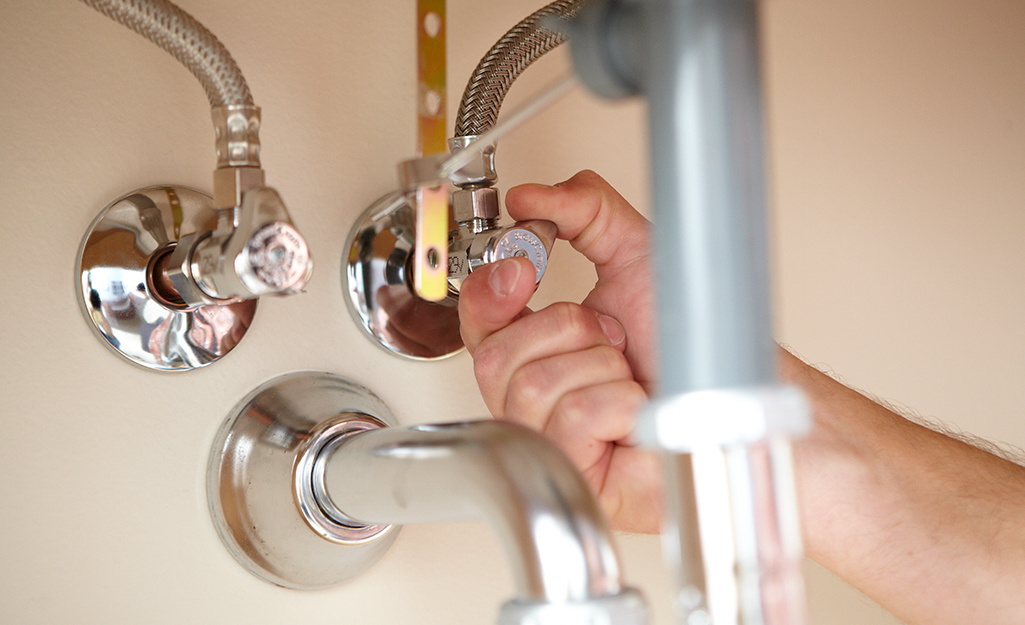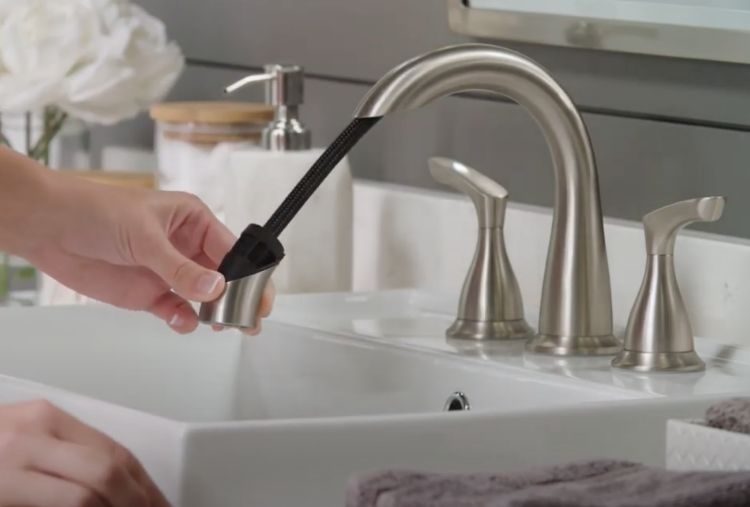How It's Required to Address a Malfunctioning Faucet
How It's Required to Address a Malfunctioning Faucet
Blog Article
This great article down below in relation to Why Are My Faucets Dripping (And Can I Fix It Myself)? is exceedingly insightful. You should take a peek.

Leaking faucets could seem like a minor aggravation, however their effect surpasses just the aggravation of the noise. From wasting water to sustaining unneeded economic expenses and health risks, disregarding a trickling tap can bring about various repercussions. In this short article, we'll look into why it's crucial to resolve this common home concern immediately and efficiently.
Waste of Water
Ecological Influence
Dripping taps add dramatically to water waste. According to the Epa (EPA), a solitary faucet trickling at one drip per second can squander greater than 3,000 gallons of water annually. This not only strains water resources yet also impacts environments and wildlife based on them.
Financial Expenses
Boosted Water Bills
Beyond the environmental impact, leaking taps can inflate water bills considerably. The built up wastefulness in time translates right into higher energy costs, which could have been prevented with timely repair work.
Potential Building Damages
Moreover, extended dripping can bring about harm to fixtures and surface areas surrounding the faucet. Water buildup can trigger discoloration, rust, and even architectural problems if left ignored, resulting in additional fixing costs.
Wellness Problems
Mold And Mildew and Mildew Growth
The consistent presence of moisture from a leaking tap produces an excellent environment for mold and mildew growth. These fungis not only endanger indoor air quality but likewise position health and wellness threats, particularly for individuals with breathing problems or allergies.
Waterborne Diseases
Stagnant water in trickling faucets can come to be a breeding place for microorganisms and various other virus, raising the threat of waterborne conditions. Impurities such as Legionella bacteria flourish in stagnant water, possibly leading to significant ailments when consumed or inhaled.
DIY vs. Specialist Repair service
Pros and Cons of Do It Yourself Fixing
While some may attempt to take care of a leaking tap themselves, DIY repairs include their own collection of challenges. Without appropriate knowledge and devices, do it yourself attempts can worsen the concern or result in insufficient repairs, extending the trouble.
Benefits of Employing a Specialist Plumber
Hiring a specialist plumber guarantees that the underlying root cause of the trickling faucet is dealt with effectively. Plumbing professionals possess the proficiency and devices to diagnose and fix tap concerns effectively, conserving time and decreasing the threat of more damages.
Step-by-Step Guide to Taking Care Of a Dripping Faucet
Tools Required
Prior to trying to take care of a dripping tap, collect the needed tools, consisting of a flexible wrench, screwdrivers, replacement components (such as washing machines or cartridges), and plumber's tape.
Common Tap Issues and Their Solutions
Determine the sort of faucet and the details problem causing the drip. Typical problems consist of worn-out washers, rusty valve seats, or defective O-rings. Describe producer directions or on-line tutorials for step-by-step assistance on repair services.
Safety nets
Regular Maintenance Tips
To avoid trickling taps, execute routine upkeep such as cleansing aerators, examining for leaks, and changing worn-out components promptly. Furthermore, take into consideration installing water-saving gadgets or updating to more effective components.
Importance of Prompt Repair Works
Attending to trickling faucets as soon as they're discovered stops more water wastefulness and possible damage, ultimately saving both water and money in the long run.
Impact on Home Value
Understanding of Well-Maintained Home
Preserving a building in good condition, consisting of attending to maintenance issues like trickling taps, improves its perceived worth and charm among prospective buyers or lessees.
Impact on Resale Value
Properties with properly maintained plumbing fixtures, consisting of faucets, command higher resale values in the real estate market. Addressing trickling faucets can add to a positive impact throughout building assessments and settlements.
Ecological Obligation
Specific Contribution to Conservation
Taking obligation for dealing with trickling faucets aligns with broader initiatives towards water conservation and ecological sustainability. Every person's actions jointly make a substantial effect on preserving priceless resources.
Lasting Living Practices
By prioritizing punctual repair work and taking on water-saving practices, people contribute to lasting living practices that profit both existing and future generations.
Final thought
Dealing with a trickling faucet exceeds plain convenience; it's a crucial step toward preserving water, reducing financial expenses, and guarding health and home. Whether through DIY repair work or expert help, doing something about it to deal with trickling taps is a tiny yet impactful means to advertise liable stewardship of resources and add to a healthier, much more sustainable future.
Most Common Reasons for a Leaky Faucet and How to Stop the Drip
Whether it’s your kitchen faucet leaking or a bathroom faucet leaking, one leaky faucet can waste anywhere from three to 30 gallons of water every single day. If the constant drip-drip-drip doesn’t get your attention, your water bill will. The good news is that, by following a few simple steps, chances are pretty good you can fix the problem yourself.
Why is it dripping?
Before you start taking things apart, let’s break down some of the most common causes of a leaky faucet.
Bad O-ring.
A cartridge is a valve that controls the flow of water into the faucet spout. On cartridge faucets there’s an O-ring—the little disc attached to the stem screw that holds the faucet handle in place. If it’s loose or worn-out, it can cause your sink handle to leak. Of course, the cartridge itself could be worn out. If that’s the case, make sure you replace it with the exact same kind.
Corroded valve seat.
The valve seat connects the faucet and the spout. If the leak seems to be coming from the spout, it might be because a buildup of water sediment has corroded the valve seat.
Worn-out washers or seals.
A leaky spout could be caused by a bad washer that rests against the valve seat. It’s just a matter of time before friction takes its toll. It could also be the wrong size washer or one that’s been installed incorrectly. Water sediments can also corrode inlet and outlet seals.
Water pressure.
If the faucet only drips now and then, or when you turn the handles a certain way, you should probably check your home’s water pressure.
Loose or broken parts.
The adjusting ring and packing nuts in the stream screw can become loose over time, causing your sink handle to leak. Try tightening or replacing the packing nut. If the leak is coming from the pipes underneath the sink, you probably have a broken pipe or fitting. If that’s the case, you should definitely call a plumber.
Know your faucet.
Faucets come in a variety of types. Each one has its own assembly—and its own possible causes of leaks. Learning about the four most common kinds of faucets will help you know how to take them apart and make any repairs.
How to stop a leaky faucet
Fixing that leaky faucet doesn’t have to take a lot of time, money, or expertise. It’s usually a simple matter of replacing a worn-out washer or gasket, a loose O ring, or another part. Chances are really good you can do this yourself if you follow these simple steps.
Shut off the water.
Before you tackle the faucet, cut off the water supply to the sink. There should be one valve for hot and one for cold. Hand-turn them clockwise with your hands till they close. If there are no valves under the sink, head to the basement and shut off the main water supply to the house. Then turn on the faucet until it empties out the water that’s still in the line and you’re ready to start. It’s a good idea to cover the sink drain with a plug or a rag so you don’t lose any small pieces and parts while you’re working.

Do you appreciate reading up on Water Dripping from Faucet: Why and How to Fix? Put a review below. We would be delighted to see your reactions about this write up. Hoping that you come back again in the near future. Don't hesitate to take the time to share this blog posting if you enjoyed it. Thanks so much for going through it.
Report this page